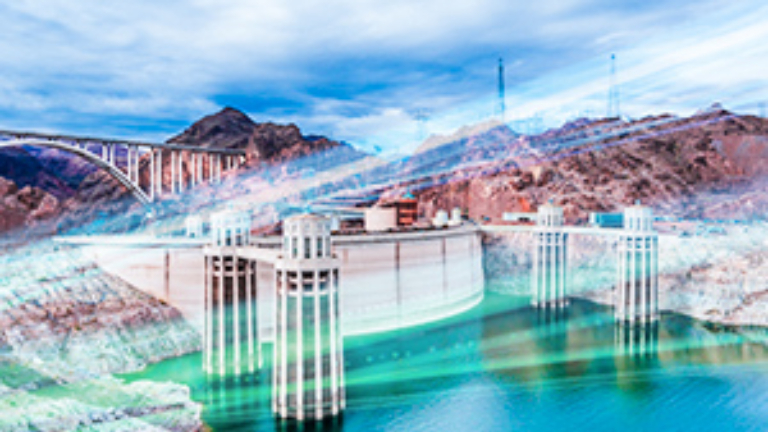Blog
Published: August 07, 2018
Nevada Looks toward Electricity Deregulation Vote
Nationally, the trend of power deregulation seems to have largely stabilized. While there are some occasional efforts in states like Ohio or Michigan to re-regulate, these rarely make it past the introduction of a bill or speculation on the part of a utility spokesperson. Similarly, few states seem to be interested in deregulating (or in the case of California and Michigan, further deregulating) their power sector.

Quick Facts
- Products
- Indoor Agriculture System
Nevada Looks Toward Electricity Deregulation Vote
August 07, 2018

Nationally, the trend of power deregulation seems to have largely stabilized. While there are some occasional efforts in states like Ohio or Michigan to re-regulate, these rarely make it past the introduction of a bill or speculation on the part of a utility spokesperson. Similarly, few states seem to be interested in deregulating (or in the case of California and Michigan, further deregulating) their power sector. What changes that have occurred in recent years are mostly small and on the margins, such as Michigan’s adoption of a state-wide capacity charge or Virginia’s allowing owners to aggregate load in multiple location to achieve the 5 megawatt demand needed to qualify for third-party supply.
Except Nevada.
This November, Nevada will hold the second of two votes needed to deregulate its electric sector. The first occurred in November 2016, in the wake of controversy surrounding NV Energy’s, the state’s largest utility, net-metering practices. Now, two years later, the same wording must be approved again by the public before the state may begin the process of deregulation. If approved by a simple majority a second time, Nevada would be required to deregulate no later than July of 2023.
Although the measure passed with almost 75% approval in 2016, it is unclear how the people of Nevada will vote this November, as today’s status quo is somewhat different than that of eighteen months ago. In 2016, NV Energy was under political fire for decreasing payouts made to customers with solar generation in excess of their load. The conflict was on-going and messy, with environmental groups coming out rather vocally against NV Energy, and the state’s governor and courts needing to intervene several times.
Today, on the other hand, this is not the case. Last week the Sierra Club and Natural Resource Defense Council both came out against deregulation, citing concern that NV Energy would cancel several solar generation projects that it is developing. Political pressure is also now greatly reduced as legislation passed in 2017 clarified how owners of rooftop solar units should be compensated for their contributions to the power sector.
There are also the questions of what deregulation would even look like in Nevada. While aligning with a regional grid operator (known as an ISO) is not necessarily required for deregulation, the intricacies of balancing load and generation is a key component in making deregulation economic. Given Nevada’s geography, joining an ISO would mean that the state would either need to create its own or join California’s CAISO to the West. Not joining an ISO would mean that users would be responsible for monitoring and communicating their load to neighbors, effectively limiting the benefits of deregulation to large industrial sites.
Starting an ISO from scratch is no small task, with the difficulty compounded by Nevada’s relatively small load. In 2017 NV Energy, which covers most of the major urban areas in the state, saw a peak demand of only 7,500 MW, less than is seen even in Alberta, Canada’s AESO (11,200 MW). Peak demand is important because higher loads equate to more stable pricing, as the likelihood of relatively large changes in load and generation shifting dramatically is decreased. Larger loads are also easier to forecast for and to predict, as the impacts of small outages or individual site shutdowns are less impactful on the entire system.
Joining CAISO could also be problematic, although likely less so than creating a new ISO. The first problem is that California would have to further open up its power market to other states. Work toward this end is currently occurring, but it remains hotly contested both within and outside of California. Second, joining CAISO would mean that either California or Nevada would have to sacrifice some measure of control over energy policy, as CAISO is currently a major component in California’s efforts to decarbonize. Complications around this divergence between state-level goals and ISO markets is currently coming to the center of the center stage in other ISOs such as the mid-Atlantic region’s PJM. Third, membership in CAISO would expose Nevada to greater fallout if California experiences another energy crisis like it did in the early-2000s.
Complications such as these are why, assuming the measure passes in November, Nevada would have more than four years to complete the deregulation process. The state would also need to perform a delicate dance wherein utilities such as NV Energy would become two unrelated companies, one that handles generation and another that is responsible for transmission and distribution. In the process of this, there would likely be a prolonged rate freeze in addition to riders to compensate utilities for investments that they have already made into grid infrastructure. Although these measures may sound mundane, deregulation sinks or thrives based on such little details and how well a PUC can properly gauge a utility’s value.

